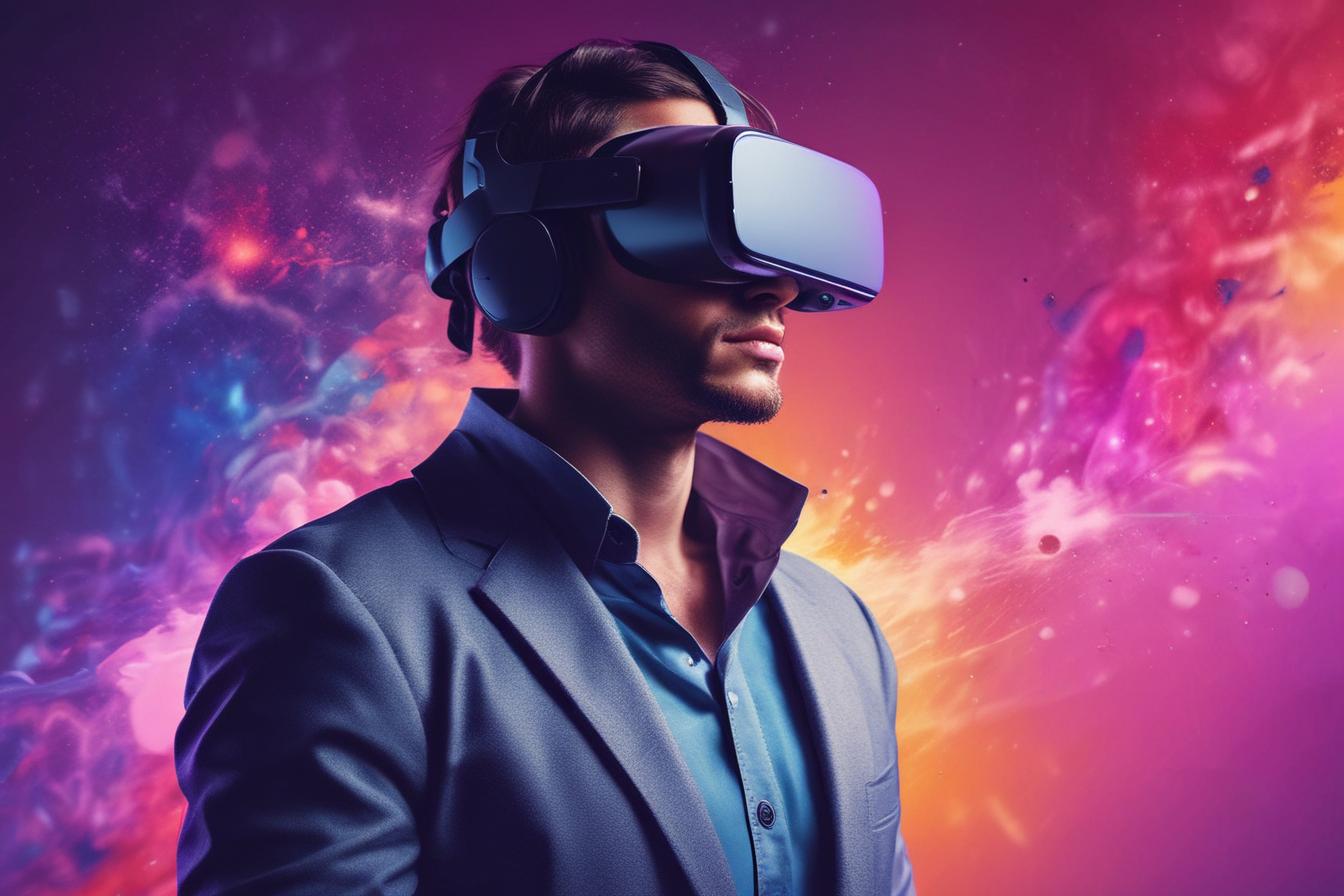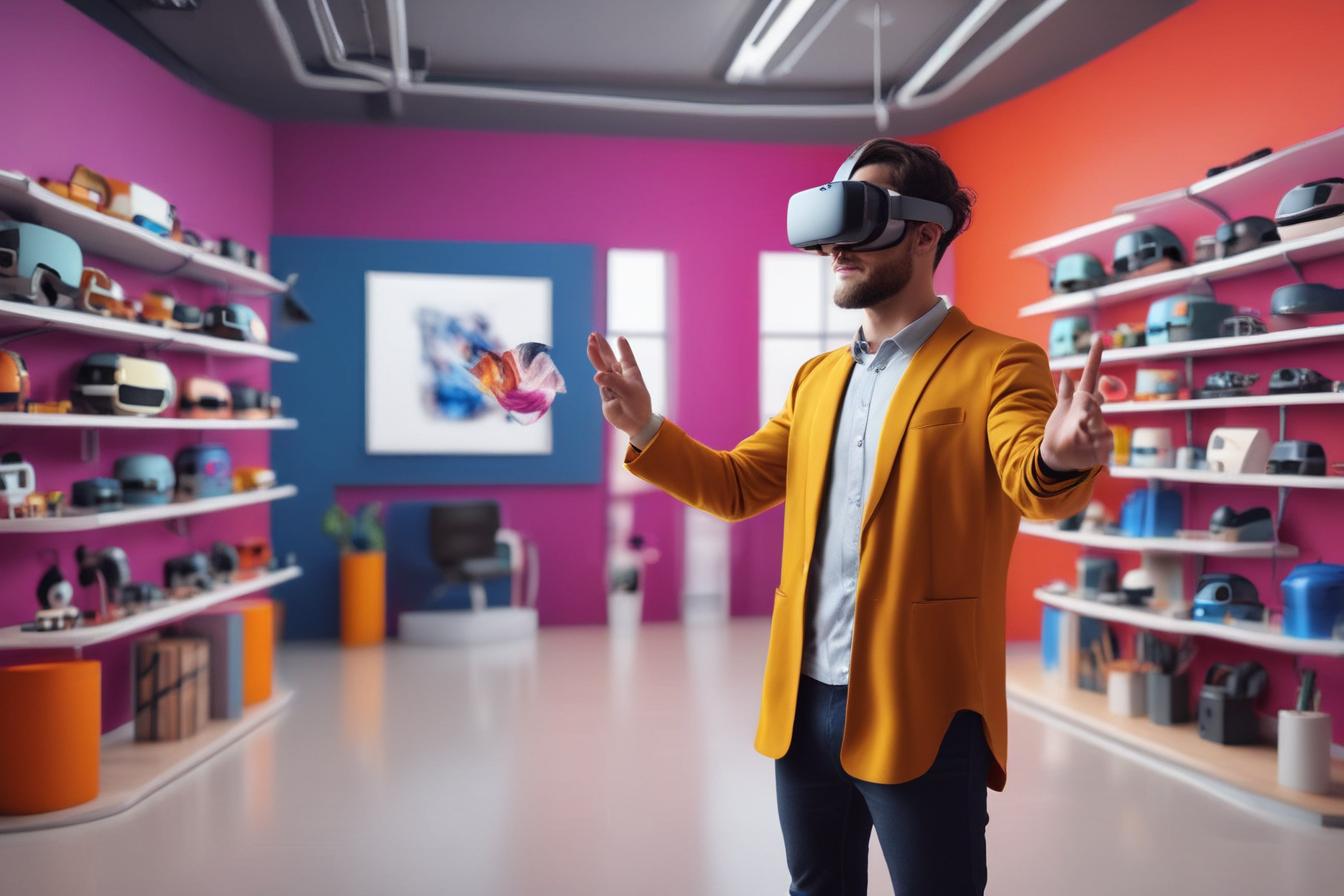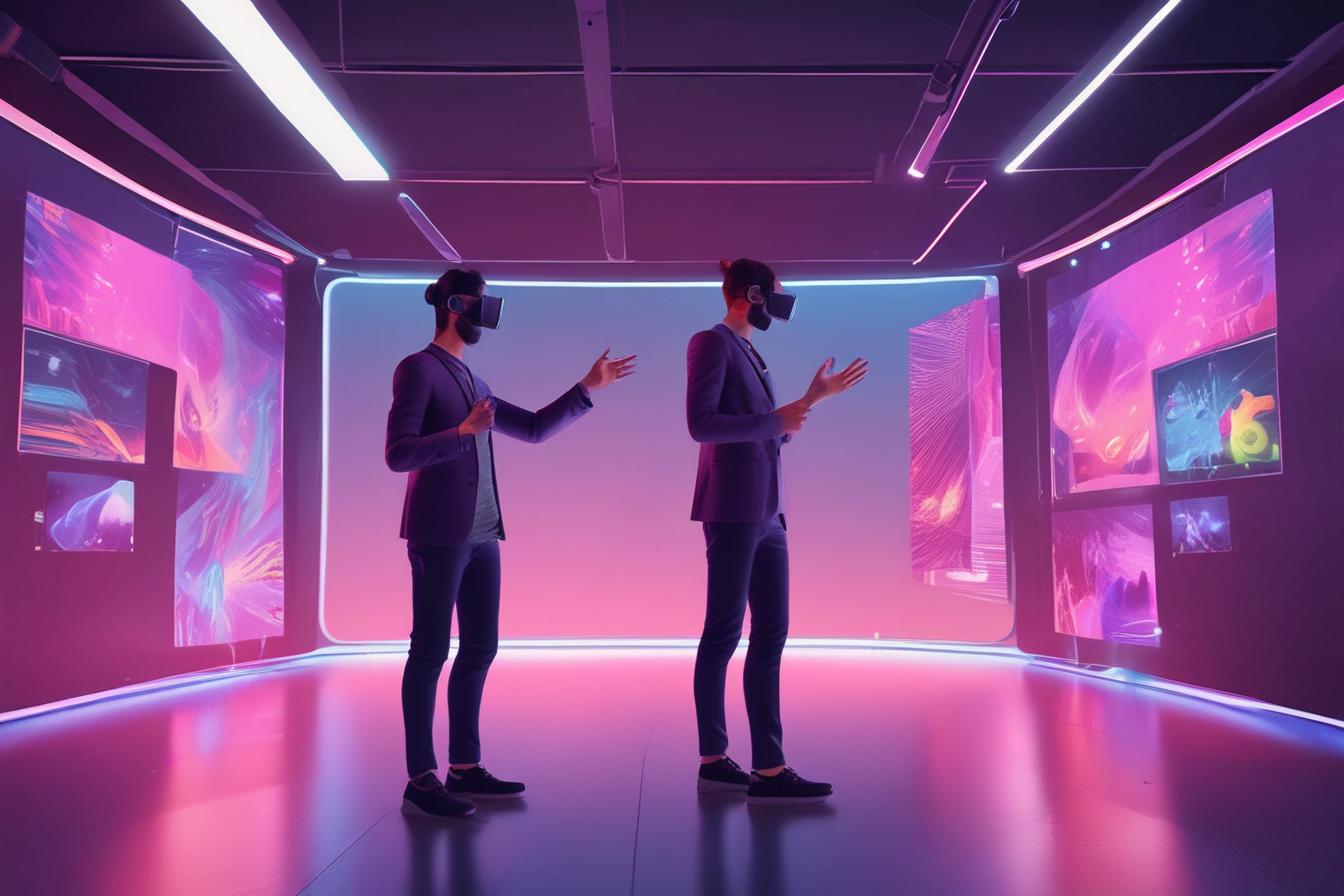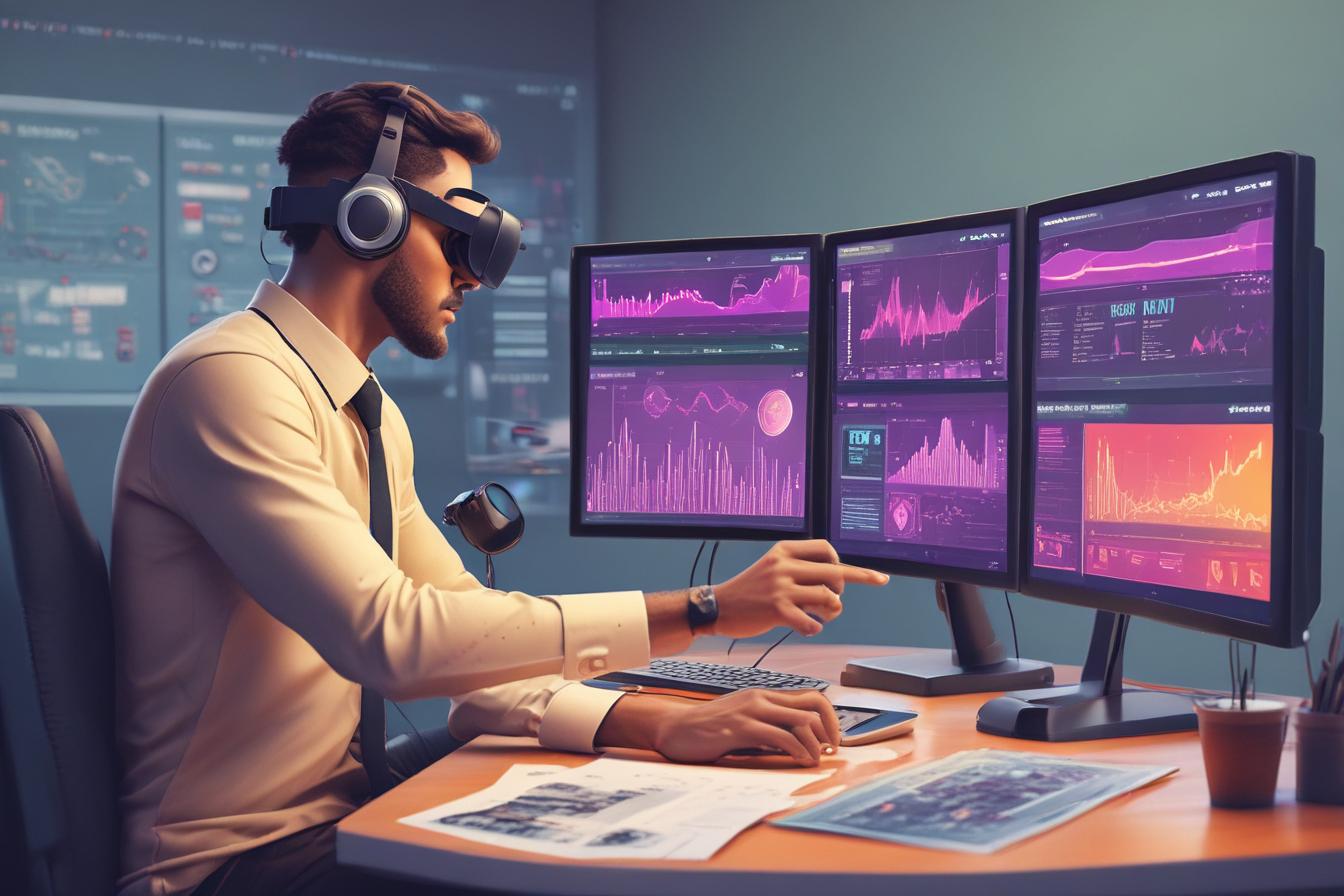What is VR Content Marketing and Why Does it Matter?
In the ever-evolving digital landscape, businesses are constantly seeking innovative ways to captivate their audience and drive engagement. One strategy that has gained significant traction in recent years is VR content marketing. This immersive approach leverages the power of virtual reality (VR) technology to create captivating and memorable experiences that transcend traditional marketing methods.
The Immersive Nature of VR Content Marketing
VR content marketing allows brands to transport their audience into a virtual world, fostering a deeper connection and leaving a lasting impression. By engaging multiple senses simultaneously, VR experiences have the ability to evoke emotions, convey complex concepts, and create a sense of presence that traditional marketing channels struggle to achieve.
Standing Out in a Crowded Market
In a world where consumers are bombarded with countless marketing messages, VR content marketing provides a unique opportunity for businesses to stand out from the competition. By offering an immersive and memorable experience, brands can capture the attention of their target audience and leave a lasting impression, ultimately driving engagement and brand loyalty.

Top VR Content Marketing Strategies for Maximum Impact
To truly harness the power of VR content marketing, businesses must employ strategic approaches that resonate with their target audience and align with their overall marketing objectives. Here are some top strategies to consider:
Storytelling Through VR Experiences
One of the most effective VR content marketing strategies is storytelling. By crafting compelling narratives and weaving them into immersive VR experiences, brands can transport their audience into captivating worlds, fostering emotional connections and leaving a lasting impression.
Product Demonstrations and Virtual Showrooms
VR content marketing can also be leveraged for product demonstrations and virtual showrooms. This approach allows businesses to showcase their offerings in a highly engaging and interactive manner, enabling potential customers to experience products as if they were present in real life.
Educational and Training Experiences
Businesses can leverage VR content marketing to create educational and training experiences, providing their audience with valuable insights and knowledge in an immersive and memorable way. This approach not only enhances engagement but also positions the brand as a thought leader in their respective industry.

Creating Immersive VR Experiences That Keep Users Hooked
Crafting captivating and engaging VR experiences is crucial for the success of any VR content marketing strategy. By leveraging the right tools and techniques, businesses can create immersive virtual worlds that keep users hooked and eager to explore further.
Seamless User Experience and Intuitive Navigation
A seamless user experience is paramount in VR content marketing. Intuitive navigation and controls that feel natural and responsive are essential for creating a sense of presence and immersion within the virtual environment. Businesses can utilize advanced VR development tools and methodologies to ensure a seamless and engaging experience for their audience.
High-Quality Graphics and Realistic Visuals
The visual quality of a VR experience plays a crucial role in fostering immersion and engagement. By leveraging cutting-edge graphics and realistic visuals, businesses can transport their audience into stunningly detailed virtual worlds, blurring the lines between reality and the digital realm.
Incorporating Interactive Elements and Gamification
Interactive elements and gamification can add an extra layer of engagement to VR content marketing experiences. By incorporating interactive puzzles, challenges, or gamified elements, businesses can encourage active participation and hold the audience’s attention for longer periods, fostering a deeper connection with the brand.

Measuring and Optimizing Your VR Content Marketing ROI
As with any marketing strategy, measuring and optimizing the return on investment (ROI) of VR content marketing initiatives is crucial for ongoing success and continuous improvement. By leveraging advanced analytics and data-driven insights, businesses can fine-tune their VR content marketing strategies for maximum impact.
Defining Key Performance Indicators (KPIs)
The first step in measuring and optimizing VR content marketing ROI is to define relevant KPIs that align with your business objectives. These may include metrics such as user engagement, dwell time, conversion rates, brand awareness, or lead generation, depending on the specific goals of your VR content marketing campaign.
Leveraging Analytics and Data-Driven Insights
With the help of advanced analytics tools and platforms, businesses can gain valuable insights into user behavior, interaction patterns, and engagement metrics within their VR experiences. By analyzing this data, they can identify areas for improvement, refine their content and experiences, and optimize their strategies for better results.
Continuous Testing and Iteration
Measuring and optimizing VR content marketing ROI is an ongoing process that involves continuous testing and iteration. By experimenting with different approaches, content formats, and marketing channels, businesses can identify what resonates best with their target audience and refine their strategies accordingly.

The Future of VR Content Marketing: Trends to Watch
The field of VR content marketing is rapidly evolving, and staying ahead of emerging trends is crucial for businesses to maintain a competitive edge. Here are some key trends to watch out for in the future of VR content marketing:
Integration with Artificial Intelligence (AI)
The integration of artificial intelligence (AI) technology with VR content marketing is expected to revolutionize the industry. AI-powered systems can analyze user behavior and preferences in real-time, enabling businesses to deliver personalized and adaptive VR experiences tailored to individual users.
Advancements in Hardware and Accessibility
As VR hardware continues to evolve, becoming more affordable and accessible, the adoption of VR content marketing is likely to increase significantly. Improvements in device capabilities, resolution, and overall user experience will further enhance the immersive nature of VR content marketing experiences.
Merging of Physical and Virtual Worlds
The future of VR content marketing may also involve the seamless merging of physical and virtual worlds through technologies like augmented reality (AR) and mixed reality (MR). This convergence will open up new possibilities for creating highly engaging and interactive experiences that blend the digital and physical realms.

Real-World Examples of Successful VR Content Campaigns
To better understand the impact and potential of VR content marketing, let’s explore some real-world examples of successful VR content campaigns:
- Toms VR Experience: The shoe company Toms created a VR experience that transported users to a remote village in Peru, allowing them to witness firsthand the positive impact of the company’s « One for One » initiative, where they donate a pair of shoes for every pair purchased. This immersive experience fostered a deeper connection with the brand’s mission and values.
- Lowe’s Holoroom: Lowe’s, a home improvement retailer, launched the Holoroom, a VR experience that allowed customers to design and visualize their dream homes in a virtual environment. This innovative approach not only enhanced the shopping experience but also provided valuable insights into customer preferences and design choices.
- The New York Times NYT VR: The New York Times introduced NYT VR, a series of immersive journalism experiences that transported viewers to various locations and events around the world. This groundbreaking initiative allowed readers to experience news stories in a more visceral and impactful way, fostering empathy and understanding.
These examples showcase the diverse applications of VR content marketing and demonstrate how businesses can leverage this technology to create engaging, memorable, and impactful experiences for their audience.
While VR content marketing may seem daunting or resource-intensive, tools like ContentScale.fr can help businesses streamline the process of creating high-quality, SEO-optimized content at scale. By leveraging AI-powered content generation, businesses can save time and money while ensuring their VR content marketing efforts are search engine friendly and optimized for maximum visibility and engagement.
Conclusion and CTA
VR content marketing represents a powerful and innovative approach to captivating audiences and driving engagement. By creating immersive and memorable experiences, businesses can forge deeper connections with their target audience, stand out from the competition, and achieve measurable results.
Whether through storytelling, product demonstrations, educational experiences, or a combination of these strategies, VR content marketing offers a unique opportunity to engage with consumers on a deeper level. As technology continues to evolve, the possibilities for creating compelling VR experiences will only expand, paving the way for even more innovative and impactful marketing campaigns.
To stay ahead of the curve and harness the full potential of VR content marketing, businesses should embrace emerging trends, leverage advanced analytics, and continuously optimize their strategies for maximum impact. By doing so, they can create a lasting impression, foster brand loyalty, and drive meaningful engagement with their target audience.
Ready to elevate your content marketing game and explore the possibilities of VR? Contact us today to learn how ContentScale.fr can help you generate high-quality, SEO-optimized content at scale, empowering you to create captivating VR experiences that truly resonate with your audience.
